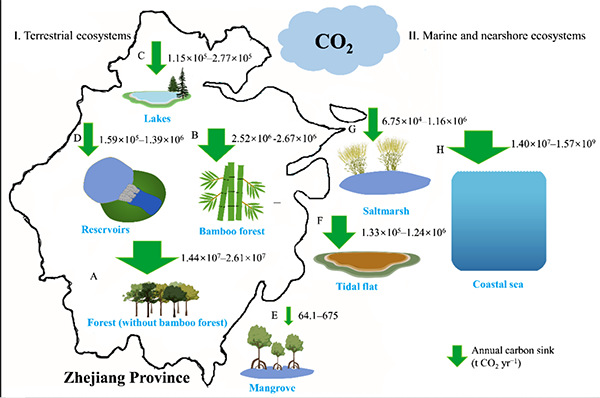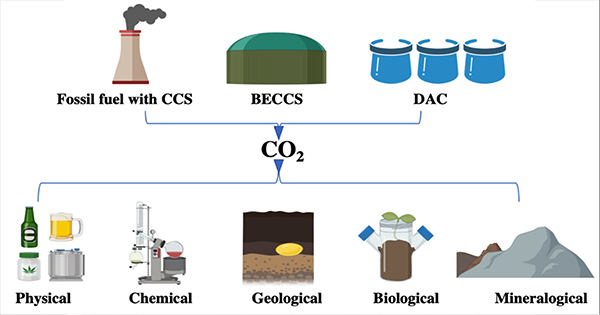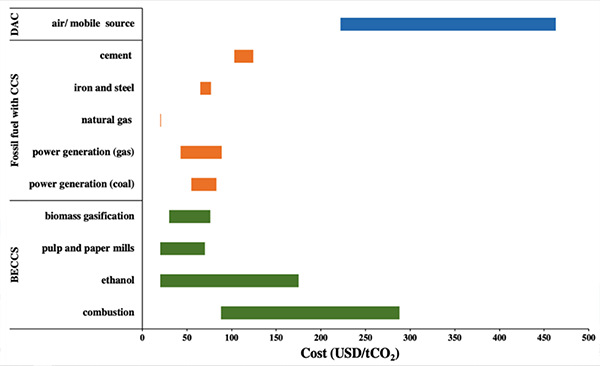Driven by the "Double Carbon" goals, the research team led by FU Weiqi at Ocean College, Zhejiang University, offers a clear picture of the current situation and key pathways in the fields of "carbon neutrality" in Zhejiang Province. On this basis, the team provides suggestions and directions on how to achieve "carbon neutrality" for Zhejiang Province. Their research findings are published in an article entitled "Sustainable Approaches to Realize Carbon Neutrality in China: A Case Study of Zhejiang Province" in the September 22 issue of Journal of Marine Science and Engineering.
Zhejiang Province boasts a rich and diverse natural ecological system comprised of forests, rivers, lakes, mangroves, and coastal seas. By calculating the carbon sink based on existing research data, the researchers provide a systematical recap on current carbon emissions in Zhejiang Province, map the distribution of carbon sequestration capacity based on the natural ecological system, analyze the ecological and industrial pathways to improving carbon sink and reducing carbon emissions, and put forward the existing challenges and potential solutions.

On the strength of the current carbon sink and the natural environment in Zhejiang Province, the research team proposes an ecological approach to increasing the carbon sink. With vast forests in Zhejiang Province, chances are slim that more areas will be afforested to increase carbon sink. In contrast, carbon sink can be enhanced due to the large farmland and forests. As a coastal province, Zhejiang Province has a large potential for carbon sink growth in both near-shore and offshore areas. Carbon sinks can be increased in nearshore areas by restoring mangroves and promoting aquaculture. In vast open waters, the growth of phytoplankton has an immense potential to increase carbon sink. However, it remains to be a big challenge to enhance the marine carbon sink via the proliferation of phytoplankton because it is still open to contention regarding the use of fertilizers in oceans.


By calculation, the increase in carbon sink via ecological pathways is relatively limited as compared to the total sum of carbon emissions in Zhejiang Province. Therefore, reducing carbon emissions plays an essential role in achieving carbon neutrality. The coal-based power sector is the primary source of greenhouse gas emissions. Against this backdrop, one of the important options is to develop low-carbon eco-friendly energy. In addition, negative emissions technologies (NETs) are indispensable for the negative emissions of carbon dioxide by means of capturing, separating, utilizing, and storing carbon dioxide.
To achieve carbon neutrality, the government should rationally adopt ecological and industrial pathways. Besides, more technological breakthroughs are needed to transform the vision of carbon neutrality into reality.






